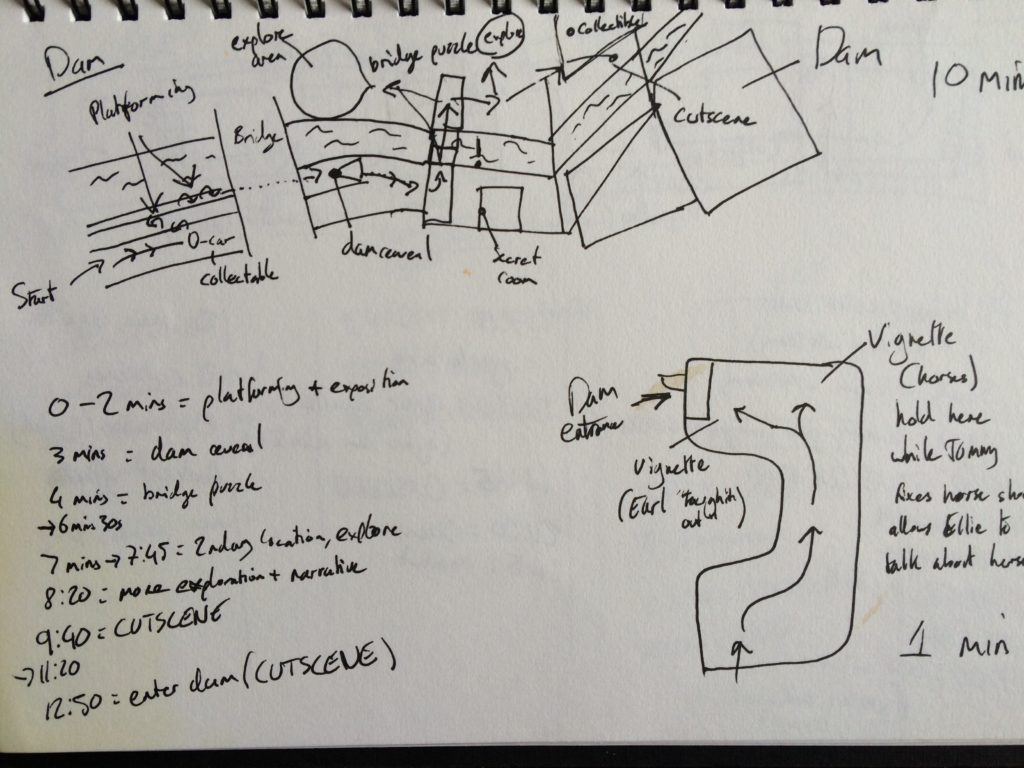Originally I was going to call this “why Hearthstone is my favourite game right now”. Reason being, I can play Hearthstone without eventually falling in to one of the many patterns that turns playing games into a long analysis of how the game was built. Here are some examples of routines I go through when playing a game.
The Notebook
I sit with a notebook when I play. If the game is a benchmark title or one that I think I’ll enjoy I usually reserve the notebook for a second playthrough and try and experience the game as the designer intended first time round (that is, not stopping to take notes every 2 minutes). When I’m taking notes it’s usually about the structure of a level, particular mechanics I felt were integrated well, or just interesting locations and their position in the game. Most of all I like to analyze the pacing of levels I feel flow really well. Here’s an example of some old notes about The Last of Us: Hydroelectric Dam. (Warning, illegible writing but these notes are just for me so I’m not worried about presentation!).

Exploring
Wolfenstein: The New Order is one of my most played games of 2014. The level design of each chapter is superb and there are often multiple paths and routes through a level which are intricately detailed in Id Tech 5. When I played through Wolfenstein: The New Order my game experience went something like:
- Stealth everywhere as much as I can exploring the level.
- Kill everyone. Everyone.
- Spend 20 minutes exploring the environments taking screenshots.

It’s not uncommon for me to hear an NPC shouting “hey let’s go!”, “hey we should go this way!” as I run around a level I just cleared of enemies.
Rebuilding
Finally, if I play an encounter or a scenario I enjoyed for any reason, I’ll try and rebuild it to help analyze how the architecture supported the gameplay. This lets me see the level from perspectives not possible in the game, getting a sense of how each corner works. It’s helpful as well to improve basic blockout skills, using a pre-existing level as a sort of “concept art” to practise building. Here’s a room from that Dam again:

Super quick like a speed painting but useful for analyzing a simple combat space.
Here’s another of my favourite encounters in the same game, the Pittsburgh Book Store which I tried to reassemble in Maya.
Context
Finally, I just want to note that while I love breaking down other games and trying to see how they tick, I believe a level designer (and game developers on the whole) cannot get by simply playing games. Analysis such as this is only a very small way in which you can improve and finding time for other pursuits is critical to become a better level designer.
